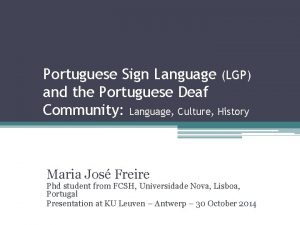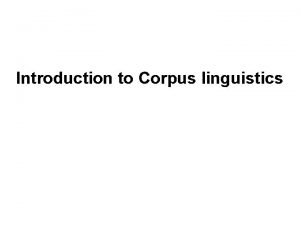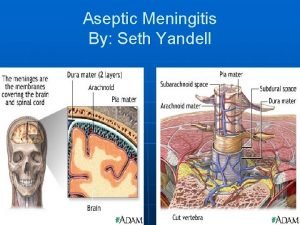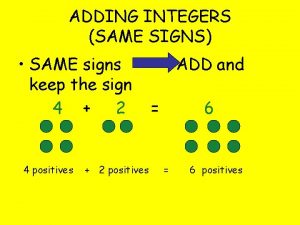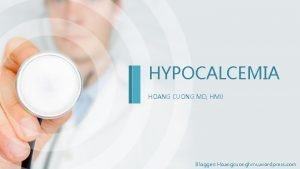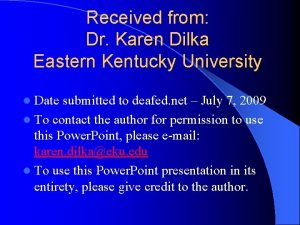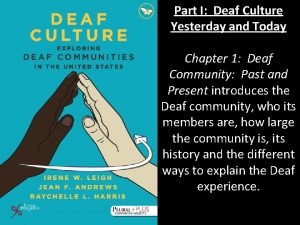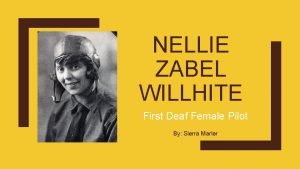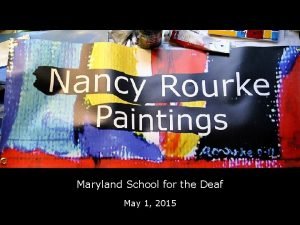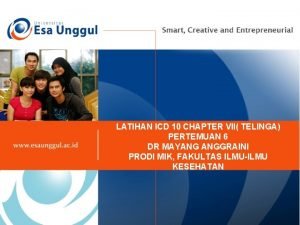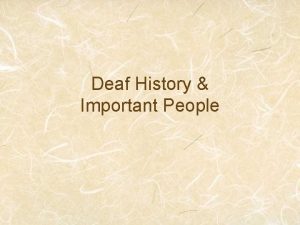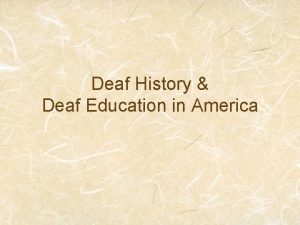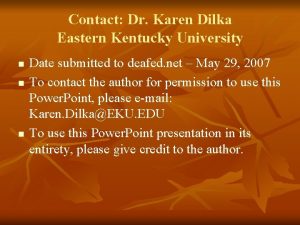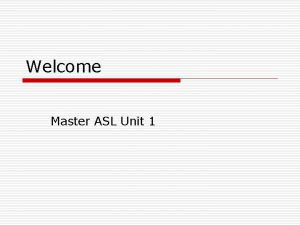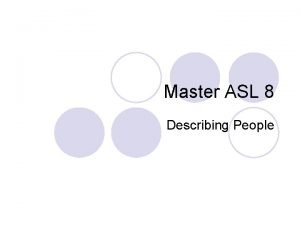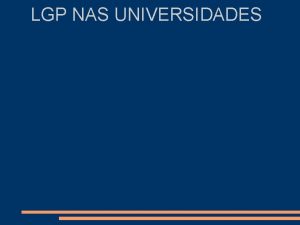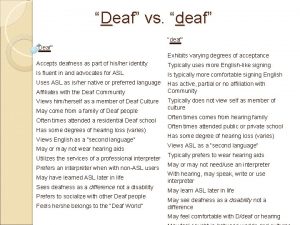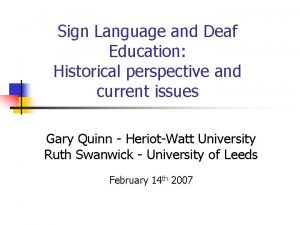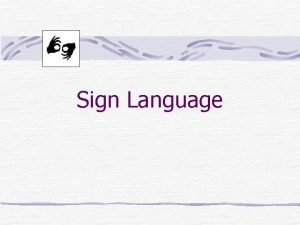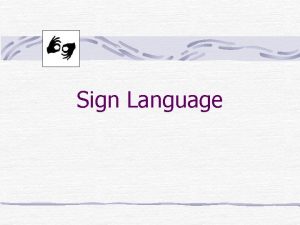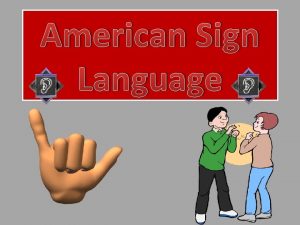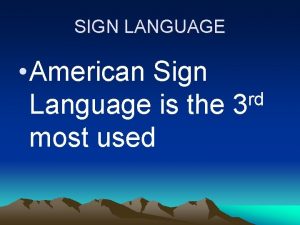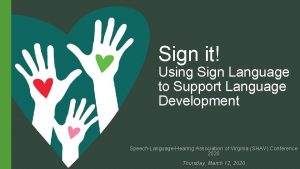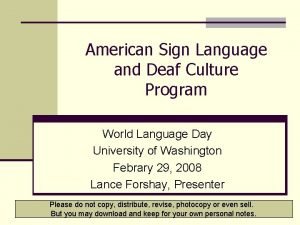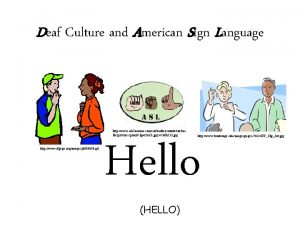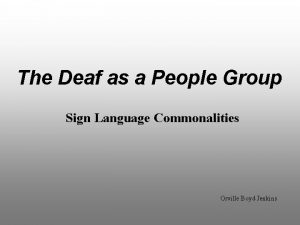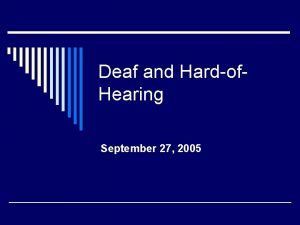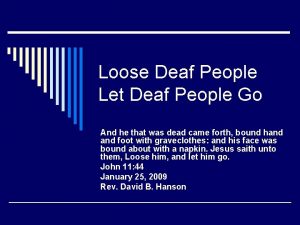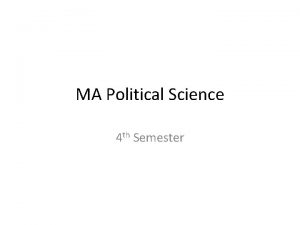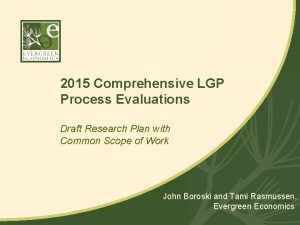Portuguese Sign Language LGP and the Portuguese Deaf





















- Slides: 21

Portuguese Sign Language (LGP) and the Portuguese Deaf Community: Language, Culture, History Maria José Freire Phd student from FCSH, Universidade Nova, Lisboa, Portugal Presentation at KU Leuven – Antwerp – 30 October 2014

Official recognition of LGP - Língua Gestual Portuguesa • Portuguese Deaf Community founded a commission to fight for the official recognition of LGP in November 15 th, 1995. This is now celebrated every year as the National Day of LGP. • Deaf associations, parents, interpreters, teachers, families and friends were represented there. • They held meetings with government, ministeries, political parties, parliament representatives, and managed to include LGP recognition within the Constitution which was beeing revised.

• Deaf community attended during debates at the Parliament for the revision of Portuguese Constitution with volunteer sign language intepreters all the time. • Finaly it was approved in July 1997, and published in Diário da República in september, 22 nd, Law 1/97: �“To protect and to value portuguese sign language as cultural expression and a tool to access education and equal opportunities”

Other achievements followed • Despacho 7528/98 – L 3/2008 – established bilingual education for deaf children • Subtitles in portuguese television programmes • Sign language interpretation of several news information programmes and entertainment • Academic training for teachers of LGP and SLInterpreters

LGP history • LGP, as other sign languages all over the world, is not a recent language. • It has been developing and growing according to the needs of the Deaf community. • Deaf people have been using it for centuries, although sometimes it is hard to find proof.

One proof of LGP in XVth century This book tells the story of the presecution of jews in Lisbon by the end of the 15 th and begining of the 16 th century. While reading this book, which accounts for a true narrative, I was surprised to find that there was a deaf person (Farid) in this narrative and that the narrator and him were friends from birth. Since their childhood they used a sign language to communicate. Throughout the book we can find lots of references to their communication using signs.

One excerpt from the book

First school for the Deaf in Portugal • In 1823 the first school for the Deaf (and also for the blind) was founded by our king D. João VI because his daughter D. Isabel Maria was concerned about these children. • Pär Aron Borg, a swedish teacher was invited to organize and direct this school. • He introduced a manual alphabet and used teaching methodologies that included signs. That is why our manual alphabet today and some signs are similar to the swedish ones.

Pär Aron Borg and his manual alphabet

Portuguese manual alphabet

Training of SLInterpreters and teachers of LGP • Late 1980’s and early 1990’s ▫ Professional training of interpreters and SL teachers • 1997/1998 SL interpreter training ▫ Academic training (5 year programme for interpreters) – After Bologna only 3 year • 2004/2005 SL teacher training ▫ Academic training (3 year programme)

Language and linguistics • First linguistic study about Portuguese Sign Language, by Isabel Prata in 1980: ▫ “Mãos que falam” includes a brief description of linguistic aspects of LGP and photos of about 70 signs from the LGP. • First LGP dictionary was published in 1991: ▫ “Gestuário da LGP” containing 500 signs • A new study about LGP grammar was published in 1994, by a linguist and two teachers of the deaf: ▫ “Para Uma Gramática da Língua Gestual Portuguesa”.

Sign language grammar This study establishes the first findings about portuguese sign language linguistic principles. As the authors do mention it is incomplete and needs more investigation and reflexion. Several papers have been published since, studying different grammatical aspects and linguistic features of LGP.

Hand Configurations from Para uma Gramática da LGP (1994)

Localization – signs attached to the body From Para uma Gramática da Língua Gestual Portuguesa (1994)

Localization – signs away from the body

Other phonological components • Orientation (Soares & Bettencourt) ▫ ▫ Neutral (palm towards body) (Ex: PEACH) Pronated (palm down/back) (Ex: FORM) Supinated (palm up/front) (Ex: CULTURE) Inverted (palm to the side/out) (Ex: PUT. AWAY. TO. THE. SIDE) • Movement • Non manual aspects/expressions

New signs – My Phd investigation • Political, social and economic changes give ground to new needs of communication. • Also in the Portuguese Deaf community ▫ 1974, April 25 th – Major political change in Portugal – begining of democracy ▫ 1981 – International Year of People with Disabilities ▫ 1985 – Portugal joined the EEC, now EU – European Union

Contexts of lexical productivity • Political – new concepts expanded from old ones �REPUBLIC – CONSTITUTION; PARLIAMENT; DEMOCRATIC. ELECTION…. • Social – equal opportunities �EQUAL. OPORTUNITIES; CITIZENSHIP; HUMAN. RIGHTS • Education – further studies �BILINGUALISM; UNIVERSITY; INVESTIGATION • New technologies �COMPUTER; MOBILE. PHONE; FACEBOOK….

Research methology • Corpus ▫ LGP videos: Deaf associations; Deaf news; individuals • Data collection ▫ Visualization; notation; register (files) • Analysis ▫ Validation of new signs (group of native speakers) ▫ Lexicology and lexicography - productive processes ▫ Neology criteria • Final results ▫ Validated files

Thank you Two DVD: ▫ Gestuário Digital – Dictionairy of LGP (Língua Gestual Portuguesa) ▫ 1997 - 2007: 10 Years of LGP recognition - Deaf community views (english subtitles) • maria_josea@yahoo. com
 Language
Language Lgp
Lgp All the signs for driving
All the signs for driving Kernig and brudzinski signs
Kernig and brudzinski signs If the signs are the same
If the signs are the same Trousseaus
Trousseaus Trousseau sign
Trousseau sign Chvostek sign trousseau sign
Chvostek sign trousseau sign Dr andrew foster deaf
Dr andrew foster deaf Who was the first deaf teacher in america
Who was the first deaf teacher in america Values of deaf culture
Values of deaf culture First deaf pilot
First deaf pilot Affirmative de'via art
Affirmative de'via art Icd 10 tuli konduktif
Icd 10 tuli konduktif Aristotle deaf
Aristotle deaf Who founded the american school for the deaf
Who founded the american school for the deaf Dr andrew foster deaf
Dr andrew foster deaf Hear us from heaven jared anderson
Hear us from heaven jared anderson Master asl unit 1
Master asl unit 1 Asl describing a person
Asl describing a person Do deaf people laugh
Do deaf people laugh Ben cohen deaf
Ben cohen deaf
